
Oregon State University’s Summer Veterinary Experience informs academically talented high school students from underrepresented populations about diverse career options in veterinary medicine. PHOTO COURTESY OF OSU COLLEGE OF VETERINARY MEDICINE
Veterinary schools at universities around the country are offering programs for students interested in veterinary medicine and informing them about careers in the field. Oregon State University’s (OSU) Summer Veterinary Experience, for example, lets academically talented high school students from underrepresented populations “see the diversity of experiences you can have as a veterinarian; [there are] more options than just private practice,” says Tess Collins, admissions coordinator for OSU’s College of Veterinary Medicine. “Veterinarians are dentists, surgeons, anesthesiologists,” and students participating in the six-day program learn about “the complexity and variety of veterinary research,” she relates. “It’s a more immersive experience than what they have in school, typically.”
The program also provides a way for students to experience “what being a veterinary student [at OSU’s Corvallis campus] would be like,” Collins explains. In its first year, 10 Oregon students participated; last year, 24 students— including several from outside Oregon—were chosen from nearly 100 applicants. “Most students have pretty good grades and are motivated to do well in science courses,” she adds.
“We want the program to be hands-on and have a small-group feel,” Collins observes. Veterinary student mentors choose the program’s activities, which this year included doing electrocardiograms and physical examinations on dogs, she explains.
The students spend three to four days conducting lab research with OSU’s biomedical research staff, exploring “intense topics, such as the immune responses of cheetah and elk, feline injection site sarcomas, and examining the genotypes of litters of mice and determining [those of] the parents using [polymerase chain reaction],” says Collins. They also practice 21st-century skills such as “how to work together, communicate, and make presentations.”
To ascertain the program’s success, Collins says she does “an e-mail check-in every year, and typically those who respond [comprise] about half of the group.” A recent check-in showed “100% were pursuing undergraduate education; 90% were still interested in veterinary medicine; and the rest were still science-minded,” she reports.
Strong Student Interest
Purdue University’s week-long summer residential Junior and Senior Boiler Vet Camps draw about 500 applicants for the two camps, including students from outside Indiana and from Europe, according to Jim Weisman, Clinical Associate Professor in Purdue’s College of Veterinary Medicine and director of the camps. “We take about half from Indiana and half from outside Indiana,” he reports. Of a cohort of students who participated two years ago, “nearly 90% were interested in veterinary medicine as a career path,” he recalls.
Eighth and ninth graders can attend Junior Boiler Vet Camp, which presents “a broad overview of areas of veterinary medicine and lots of hands-on activities,” Weisman observes. Activities include dissecting a cow’s, dog’s or horse’s heart; watching a veterinary pathologist perform a necropsy; practicing hands-on skills and techniques used by food animal veterinarians and veterinary technicians, such as administering oral medication; and working with School of Veterinary Medicine faculty on a real medical case, determining the appropriate treatment, and giving a presentation about it “as if they were doctors” to their families, he explains.
High school sophomores, juniors, and seniors qualify for Senior Boiler Vet Camp, “a more focused experience on the dog model, [in which] camp dogs get medical attention, and students learn what a small animal veterinarian does,” Weisman relates. Student groups are assigned a dog, then learn about its behavior and training; see how to do a physical exam—then do one on their dog; study parasites and examine their dog for them; and hear about spaying or castration of a dog, then do the procedure on a cadaver dog.
“We want to expose [students] to options in STEM [science, technology, engineering, and math] fields, even if they decide not to become a veterinarian,” he maintains. “We build upon what we hope they’re learning in science in school.”
Using Animal Artifacts
University of California, Davis’s School of Veterinary Medicine’s Veterinary Medicine Extension takes a different approach with its Animal Ambassadors science education outreach program for grades 3–5. Instead of live animals; hands-on materials like rubber foot molds, plaster tooth casts, and imitation animal coats are used in classrooms and informal education venues, eliminating the need to bring live animals to schools or for students to travel to places with live animals.
“We use artifacts to provide a longer intervention over multiple weeks that is very inquiry-based and allows students to explore the animal kingdom in depth,” says Martin Smith, cooperative extension specialist. He notes that students in urban areas “don’t see many animals, but they can learn about them and about veterinary science through an artifact-based program.”
Plaster tooth casts, for example, can show students “the size and shape of teeth and what they do” for herbivores, omnivores, and carnivores, Smith explains. “As an extension activity, students can make animal masks showing the teeth of different animals and wear them in a skit. This reinforces concepts and brings in the arts and other subjects,” he contends.
The curriculum also delves into “non-vocal indications” of animals’ emotions and behavior, such as “showing or not showing their teeth,” Smith relates. In a game, students match pictures of animals displaying various emotional states with the correct emotion: A smiling dog is actually an angry dog, for example. “Students describe what the animal is trying to communicate and why,” which has important implications for students’ safety, he explains. “We try to go beyond the activity and have real-world connections for authentic learning.”
After participating, students’ drawings of Self-Animal Perceptions showed “the program improved students’ relationships with animals,” Smith reports, and “students use more vocabulary and make more observations” after exposure to the curriculum. Because group activities emphasize “skills such as teamwork and communication, students’ [abilities in these areas] improve,” he maintains. And “in elementary classrooms, students asked a lot about veterinary school.”
This article originally appeared in the November 2017 issue of NSTA Reports, the member newspaper of the National Science Teachers Association. Each month, NSTA members receive NSTA Reports, featuring news on science education, the association, and more. Not a member? Learn how NSTA can help you become the best science teacher you can be.
The mission of NSTA is to promote excellence and innovation in science teaching and learning for all.
Follow NSTA



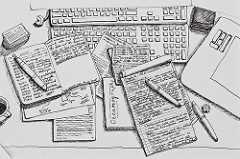 This is my first year of teaching physics and I can’t think of generic substitute plans for this class. Can you suggest some generic/emergency plans that could help me?
This is my first year of teaching physics and I can’t think of generic substitute plans for this class. Can you suggest some generic/emergency plans that could help me? 
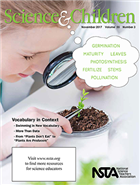
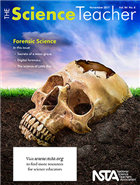 Editor’s Corner: Forensics: Solving Mysteries With Science
Editor’s Corner: Forensics: Solving Mysteries With Science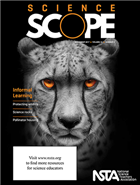 Science Scope –
Science Scope – 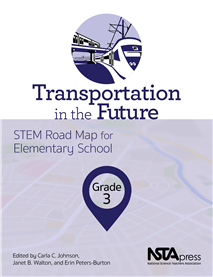




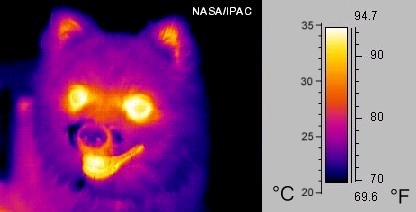 I have been thinking about getting a thermal imaging camera. Specifically, an attachment for an iPhone that allows it to do thermal imaging. If you had one in your classroom, what would you use it for? – R., Alaska
I have been thinking about getting a thermal imaging camera. Specifically, an attachment for an iPhone that allows it to do thermal imaging. If you had one in your classroom, what would you use it for? – R., Alaska